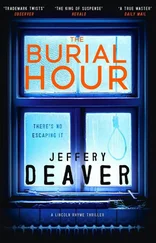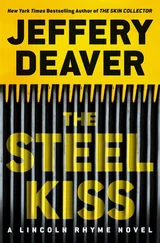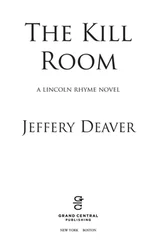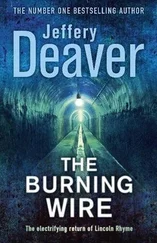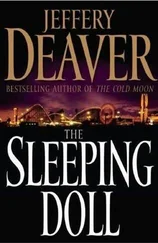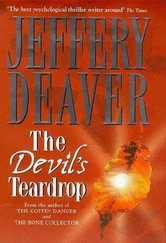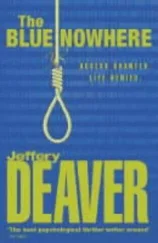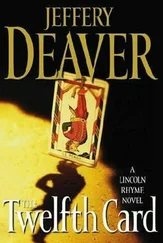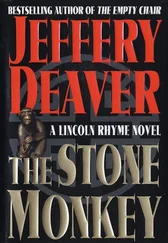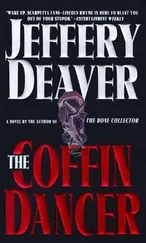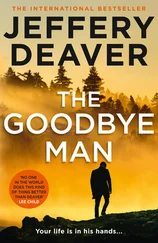Or maybe the Conjurer, disguised as one of them.
But for the moment she left the issue of pursuit in others' hands and turned back to her own area of expertise: the crime scene, whose search was supposed to be a brief formality but had now become a matter of life and death.
Making his way cautiously through the basement of the Manhattan Detention Center, Malerick was reflecting on his escape, offering silent patter to his revered audience.
Let me share with you a trick of the illusionist's trade.
To truly fool people it's not enough to misdirect them during the illusion. This is because when confronted with a phenomenon that defies logic the human brain continues to replay the scene afterward to try to understand what happened. We illusionists call this "reconstruction," and unless we set up our trick cleverly enough an intelligent, suspicious audience will be fooled only briefly and will figure out our method after the routine is over.
So how do we trick audiences like this?
We use the most implausible method we can – either one absurdly simple or overwhelmingly complex.
An example: one famous illusionist appears to push an entire peacock feather through a handkerchief. Audiences rarely can figure out what kind of sleight of hand he uses to make it seem that the feather actually penetrates the cloth.
What's the method? It does penetrate the cloth. There's a hole in the handkerchief! The audience considers this method at first but then invariably decides that it's too simple for such a great performer. They'd rather think he's doing something far more elaborate.
Another: an illusionist met some friends for dinner at a restaurant and was asked to show them a few tricks. He declined at first but finally agreed.
He took a spare tablecloth, held it up in front of a table of two lovers dining nearby and vanished the couple and their table in one second. The friends were astonished. How could he have done it? They never guessed that, supposing that he'd probably be invited to perform, the illusionist had arranged with the maitre d' to have a prepared, collapsible table on hand and hired an actor and actress to play the couple. When he'd held up the cloth they'd disappeared on cue.
In reconstructing what they'd seen, the diners rejected the actual answer as too improbable for such an apparently impromptu performance.
And this is what occurred with the illusion you just witnessed, one I call the Shot Prisoner.
Reconstruction. Many illusionists forget about this psychological process. But Malerick never did. And he'd considered it carefully when planning his escape in the detention center. The officers escorting him down the corridor to the lockup believed they saw a prisoner slip his cuffs, grab a gun and end up shot dead right in front of them.
There was shock, there was dismay, there was horror.
But even at such peak moments the mind does what it must and before the smoke dissipated the officers were analyzing the events and considering options and courses of action. Like any audience they engaged in reconstruction and, knowing that Erick Weir was a skilled illusionist, undoubtedly wondered if the shooting had been faked.
But their ears had heard a real gun fire a real bullet.
Their eyes had seen a head explode under the impact and, a moment later, a limp body in the pose of death and blood, brain, bone and glazed eyes.
The reconstruction resulted in a conclusion that it was far too implausible for a man to go to such elaborate lengths to fake the shooting. So, confident he was dead, they'd left him alone, unshackled, in the corridor while they went off to make their frantic radio or phone calls.
And my method, Revered Audience?
As they'd walked down the corridor Malerick had peeled off the bandage on his hip and removed a universal handcuff key from a tiny slit in his skin. Once out of the cuffs he hit the woman guard in the face, the other in the throat and pulled her gun from her holster. A struggle… and finally he'd aimed the gun behind his head and pulled the trigger. At the same time he tapped the firing circuit of the tiny squib taped to a shaved portion of his scalp under his long hair, blowing up a small bladder of fake blood, bits of gray rubber and fragments of beef bone. To add to the credibility of the act he'd used a razor knife blade – hidden in his hip with the key – to cut his scalp, an area of the body that bleeds profusely but with little pain.
Then he'd lain like a discarded rag doll, breathing as shallowly as he could.
His eyes remained open because he'd filled them with viscous eye-drops that produced a milky appearance and allowed him not to blink.
Fuck me, look what I did! Oh, fuck! Help him, somebody!
Ah, but Officer Welles, it was too late to help me.
I was dead as a roadside deer.
He headed now through winding corridors in the interconnected basements of the government buildings here until he came to the supply closet where he'd stashed his new disguise several days ago. Inside the small room he stripped and then hid the wound appliance, his old clothes and shoes behind some boxes. Donning his new outfit and applying some makeup, he was in role in less than ten seconds.
A glance out the door. The corridor was empty. He stepped outside and hurried for the stairway. It was nearly time for the finale.
• • •
"It was an out," Kara said.
The young woman had been whisked back to Rhyme's townhouse from Stuyvesant Manor a few moments ago.
"An out?" the criminalist asked. "What's that?"
"It means an alternative plan. All good illusionists have one or two backups for every routine. If you screw up or the audience catches your moves, you have an escape plan to save the trick. He must've figured there was a chance he'd get caught so he rigged an out to let him get away."
"How'd he do it?"
"Explosive squib behind a blood bladder hidden in his hair. The shot? It might've been a fake gun," she suggested. "Most catch-the-bullet tricks use fekes, phony guns. They have a second barrel. Or they're real guns, loaded with blanks. He might've switched guns with the officer taking him to his cell."
"I doubt it," Rhyme said, looking at Sellitto.
The rumpled cop agreed. "Yeah, I don't see how he could've switched a service piece. Or unloaded it and reloaded it with funny slugs."
Kara said, "Well, he could've just pretended to shoot himself. Played with the angle of sight."
"What about the eyes?" Rhyme asked. "The wits said his eyes were open. He never blinked. And they looked glazed."
"There're dozens of dead-man fekes and gimmicks. He might've used eye-drops that lubricate the surface. You can keep them open for ten or fifteen minutes. And there're self-lubricating contact lenses too. They have a glazed look, like you're a zombie."
Zombies and fake blood… Christ, what a mess. "How'd he get through the goddamn metal detector?"
"They weren't in the lockdown area yet," Sellitto explained. "That's what they were on their way to."
Rhyme sighed. Then he snapped, "Where the hell's the evidence?" Looking from the door to Mel Cooper, as if the slim technician could make the delivery from the detention center materialize on command. It turned out that there were two crime scenes downtown: one was the corridor where the phony shooting had occurred. The other scene was in the basement of the courthouse – a janitor's closet. One of the search teams had found the fake wound appliance, clothes and some other things hidden in a bag there.
Thom answered the ringing door chime and a moment later Roland Bell hurried into the laboratory. "Can't believe it," he said breathlessly, his hair a sweaty mop on his forehead. "It's confirmed? He's rabbited?"
Читать дальше

